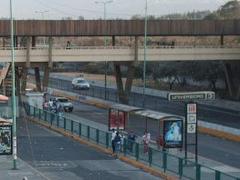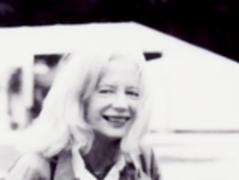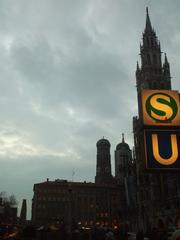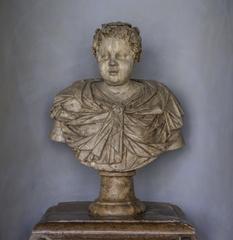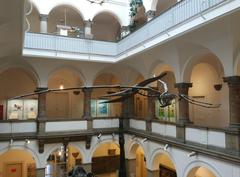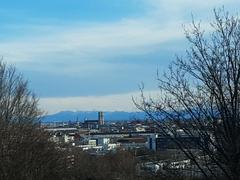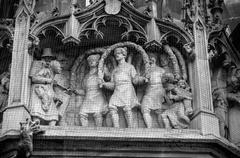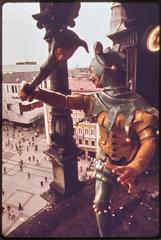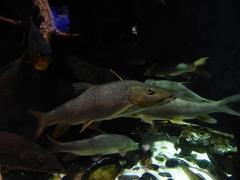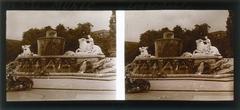A Comprehensive Guide to Visiting Villenkolonie Solln, Munich, Germany
Date: 14/06/2025
Villenkolonie Solln Munich: Visiting Hours, Tickets, and Historical Sites Guide
Introduction to Villenkolonie Solln
Villenkolonie Solln, located in Munich’s southernmost district, is a living testament to the city’s transformation from a rural village to an elite suburban enclave. With origins traced back over a millennium, the area’s natural beauty—highlighted by Balde-Höhe, Munich’s highest natural point—attracted affluent residents during the city’s late 19th and early 20th-century expansion. The arrival of the Isartalbahn railway further facilitated Solln’s development into a prestigious garden suburb, where refined architecture meets verdant landscapes (Villenkolonie Solln: A Historic Munich Villa Colony – Visiting Guide, Hours, and Attractions, Cultural and Social Significance, Exploring Villenkolonie Solln: Munich’s Historic Villa Colony – Visiting Hours, Tours & Tips).
The neighborhood is renowned for its harmonious blend of Historicism, Art Nouveau (Jugendstil), and the early Modernist villas. These stately homes, with their ornate facades, turrets, bay windows, and lush gardens, reflect the tastes of the period’s social elite. Although private, the area’s public streets and green spaces are open for visitors to enjoy leisurely walks amid unique architecture and tranquil surroundings. Self-guided tours along avenues such as Heinrich-Vogel-Straße and Diefenbachstraße reveal the cultural and historical layers of this extraordinary suburb (Visiting Villenkolonie Solln: Hours, Tickets, and Exploring Munich’s Historic Villa Colony, Discover Solln: Munich’s Historical and Cultural Gem).
Solln’s reputation as a creative haven—known as a “little Schwabing”—is well-deserved, having hosted artists, writers, and performers seeking inspiration in its serene setting. Notable landmarks, including the St. Johann Baptist churches and various memorials, offer glimpses into the area’s rich cultural history. While most villas remain private, periodic guided tours and cultural events allow deeper engagement with Solln’s architectural and artistic heritage (Cultural and Social Significance, Exploring Villenkolonie Solln).
This comprehensive guide details everything you need for a fulfilling visit—covering historical context, practical advice on hours, tickets, transportation, accessibility, nearby attractions, and photographic highlights. Whether you’re a history enthusiast, architecture lover, or seeking a peaceful retreat, Villenkolonie Solln offers a memorable experience within Munich’s vibrant urban fabric.
Table of Contents
- Overview and Historical Context
- Development and Architecture
- Visiting Information
- Photographic and Cultural Highlights
- Visitor FAQs
- Summary and Visit Tips
- References and Further Reading
Overview and Historical Context
Solln’s earliest records date to 1005, describing a rural settlement on Munich’s gravel plain near the Isar River. The area’s topography, notably the 579-meter-high Balde-Höhe, made it an appealing location for Munich’s elite seeking respite from the city. The late 19th-century introduction of the Isartalbahn railway triggered rapid suburbanization and the birth of Villenkolonie Solln.
As Munich’s city limits expanded, developers like Jakob Heilmann envisioned Solln as a garden colony. East of the Munich–Lenggries railway, Villenkolonie Prinz-Ludwigs-Höhe emerged, while the western side became Villenkolonie Solln. Improved transport, especially the Prinz-Ludwigshöhe station opening in 1893, transformed the area into a prime residential destination for the urban bourgeoisie.
Development and Architecture
Between 1895 and the early 20th century, Solln blossomed into a showcase of Historicist, Art Nouveau, and early Modernist architecture. The villas are notable for their detailed facades, turrets, and bay windows, often surrounded by generous gardens. The area’s urban layout features broad, tree-lined streets (notably Heinrich-Vogel-Straße and Irmgardstraße) and open green spaces, reflecting the garden city ideals of its time.
While Villenkolonie Solln does not benefit from full ensemble protection, several villas are listed as historical monuments. The district’s artistic legacy is underscored by its former residents—painters, writers, and performers—who contributed to its reputation as a creative enclave.
Visiting Information
Hours and Tickets
Villenkolonie Solln is an open residential neighborhood accessible year-round, free of charge. There are no official visiting hours, and no tickets are required to explore its public streets and parks. The best visiting times are during daylight hours, particularly in spring and summer when the gardens are in bloom.
Tours and Access
While the villas themselves are private residences and not open to the public, local organizations and tour operators occasionally offer guided walking tours focused on the colony’s history and architecture. For up-to-date information on guided tours, consult the Munich Tourism Office or local event listings.
Getting There
- By S-Bahn: Take the S7 line to Solln station, a short walk from the villa colony’s main streets.
- By Car: Accessible via the A95 motorway, with limited street parking.
- By Bicycle: Munich’s extensive bike paths reach Solln, making cycling a pleasant option.
Accessibility
Villenkolonie Solln’s generally flat terrain and well-maintained sidewalks accommodate most visitors, though some older pavements may challenge those with mobility issues. Public transport stations are equipped with ramps and elevators.
Nearby Attractions
- Isar Riverbanks: Ideal for walks and picnics.
- Alte Sollner Kirche St. Johann Baptist: A historic church with centuries-old roots.
- Parkstadt Solln: A modern residential area showcasing post-war urban planning.
- Forstenrieder Park: Expansive green space for hiking, jogging, and nature observation.
Photographic and Cultural Highlights
- Heinrich-Vogel-Straße & Irmgardstraße: Picturesque streets lined with classic villas and mature trees.
- Balde-Höhe: Offers panoramic views of Munich’s skyline.
- St. Johann Baptist Churches: Landmarks reflecting the district’s religious and cultural heritage.
- Community Life: Local clubs and occasional festivals provide insights into Solln’s vibrant social fabric.
Solln’s “little Schwabing” legacy is reflected in its continued appeal to artists, writers, and creatives. The Dominik-Brunner-Mahnmal at the S-Bahn station stands as a symbol of civic courage and social values (Cultural and Social Significance).
Visitor FAQs
Can I enter the villas? No, the villas are private residences. Public streets and parks are open for exploration.
Are guided tours available? Yes, guided tours are occasionally offered by local tour operators and heritage organizations. Check online for current schedules.
Is the area family-friendly? Absolutely. The quiet streets and green spaces make it ideal for families.
Where can I find food and refreshments? While the villa colony itself is residential, nearby areas such as Wilhelm-Leibl-Platz and around the S-Bahn station offer cafés and eateries.
How do I get to Villenkolonie Solln? Use S-Bahn line S7 to Solln station, which is within walking distance of the main villa colony. Public transport is recommended due to limited parking.
What are the best times for photography? Early mornings and late afternoons provide the best light for capturing villa facades and gardens, especially in spring and autumn.
Summary and Visit Tips
Villenkolonie Solln captures Munich’s blend of historical prestige, artistic heritage, and suburban tranquility. Its elegant villas, tree-lined avenues, and preserved village core provide an authentic glimpse into the city’s social and architectural evolution. Accessible year-round at no cost, the neighborhood invites visitors to enjoy self-guided or occasional guided walks, explore local history, and relax in a serene environment.
To enhance your visit:
- Use interactive maps and guides from the Munich Tourism Office.
- Respect the privacy of residents by staying on public roads and refraining from entering private properties.
- For more in-depth exploration, download the Audiala app for curated tours and real-time event updates.
Villenkolonie Solln is a peaceful retreat for architecture enthusiasts, history buffs, and families alike—a unique gem within Munich’s urban landscape.
References and Further Reading
- Villenkolonie Solln: A Historic Munich Villa Colony – Visiting Guide, Hours, and Attractions (Munich Tourism Office, 2024)
- Cultural and Social Significance: Discover Solln: Munich’s Historical and Cultural Gem (Munich City District Information, 2024)
- Exploring Villenkolonie Solln: Munich’s Historic Villa Colony – Visiting Hours, Tours & Tips (Munich Tourism Office, 2024)
- Visiting Villenkolonie Solln: Hours, Tickets, and Exploring Munich’s Historic Villa Colony (Historiske Rejser, 2024)
- Solln: From village to villa colony (Stadtführungen Döhring, 2024)
- Munich Itinerary and Travel Tips (The Broke Backpacker, 2024)















